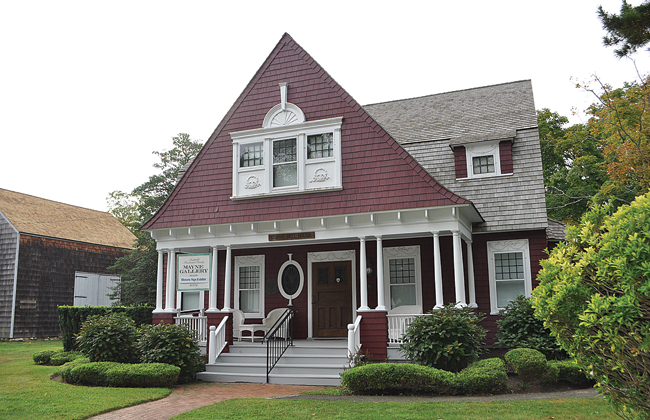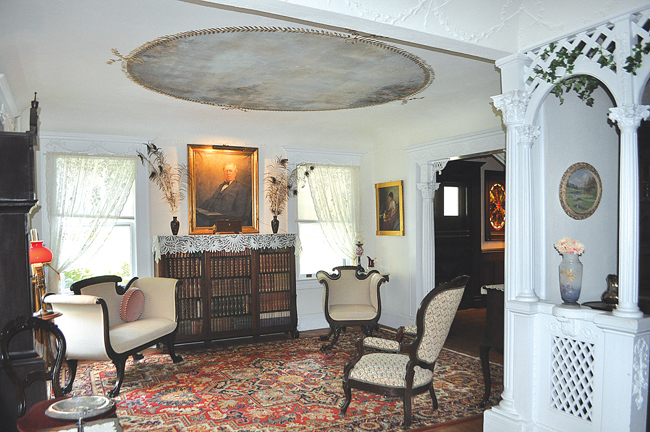Real Estate: Take a tour of the Ann Currie-Bell House

Founded in 1960, the Southold Historical Society owns more than a dozen buildings dating from 1750 to the turn of the 20th century, most of which sit at the intersection of Main Road and Maple Lane. The organization has its headquarters in the 19th-century Henry W. Prince building in downtown Southold and also operates a nautical museum at Horton Point Lighthouse.
The society’s main structure is the Ann Currie-Bell House, a late Victorian-style home built in 1900 for Joseph and Ella Boldry Hallock, parents of the organization’s first president, Ann Hallock Currie-Bell.
According to historical society director Geoffrey Fleming, the 10-room red house is a mix of architectural styles and gleans inspiration from periods like the Italian Renaissance and reign of Louis XVI. For instance, Mr. Fleming said, the living room’s window frames feature carved flowers and streamers and its ceiling is decorated with large, circular murals and “delicate stucco traceries.” It also has fluted white columns.
On the living room wall hangs a portrait of Mr. Hallock, who worked at The Suffolk Times when its office was in Greenport. He went on to buy the now-defunct Long Island Traveler, of which he was editor and owner until 1927. His “reading chair,” with a large, red-cushioned seat, survives and is located in the house’s second-floor library.
The main floor also features a breakfast room, where Mr. Fleming said intimate family meals would have been taken, and an early 20th-century kitchen with a wood and coal stove and crank telephone.
“This room has gone through many metamorphoses,” he wrote in a pamphlet about the house. “Originally, it was an open porch with a door that led into the original kitchen space. The porch was closed in around 1969 and became the society’s first office.”

Upstairs, just off the winding main staircase, is Ms. Currie-Bell’s childhood bedroom, a cozy space furnished with what’s believed to her original bed.
Mr. Fleming said Ms. Currie-Bell, an only child, had an extensive collection of dolls, some of which are on display. The room also contains a huge dollhouse made from soapboxes that was built for Ms. Currie-Bell by her aunt Lucy Folk and reportedly increased in size each year of her youth.
Considered a luxury at the time it was built, one of the home’s more unusual features is its bathroom, which is original except for the toilet. The room contains a deep tub and pedestal sink.
The second floor also has a master bedroom, playroom and sewing room. Originally, the latter would have functioned as an extra bedroom.
The house’s most curious object? That distinction goes to the master bedroom’s blue glass windowpane, an item Mr. Fleming said was at one time sold by traveling salesmen as a cure-all for “any malaise you might dream up.” These windowpanes were popular in rural communities, as the sunlight that streamed through them was believed to have curative powers capable of killing germs and preventing infection.






